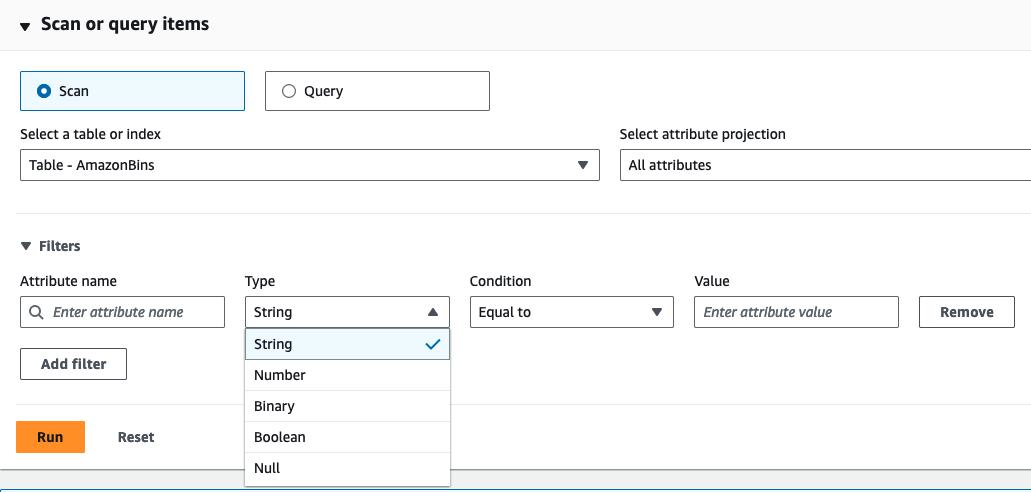2回答
- 新しい順
- 投票が多い順
- コメントが多い順
1
Your problem is you are trying to filter on a nested value, which is not possible in the web console. These are the only values to filter on:
You can use the PartiQL Web Console and issue a SQL like query, for exampe:
SELECT *
FROM MyTable
WHERE mqtt_data.Code= 'some value'
0
The tutorial you followed uses the DynamoDB[1] action. An alternative would be to use the DynamoDBv2[2] action to write the payload content to separate columns in the DynamoDB table. In this way you could leverage the DynamoDB Explorer UI to filter the items.
[1] https://docs.aws.amazon.com/iot/latest/developerguide/dynamodb-rule-action.html [2] https://docs.aws.amazon.com/iot/latest/developerguide/dynamodb-v2-rule-action.html
関連するコンテンツ
 AWS公式更新しました 3年前
AWS公式更新しました 3年前

Thanks! PartiQL will probably work for us. Although I do prefer the Explore Items 'Form' view that lets you expand and collapse nested attributes. It would be great if AWS could combine the best of both worlds.
Best regards, Phil